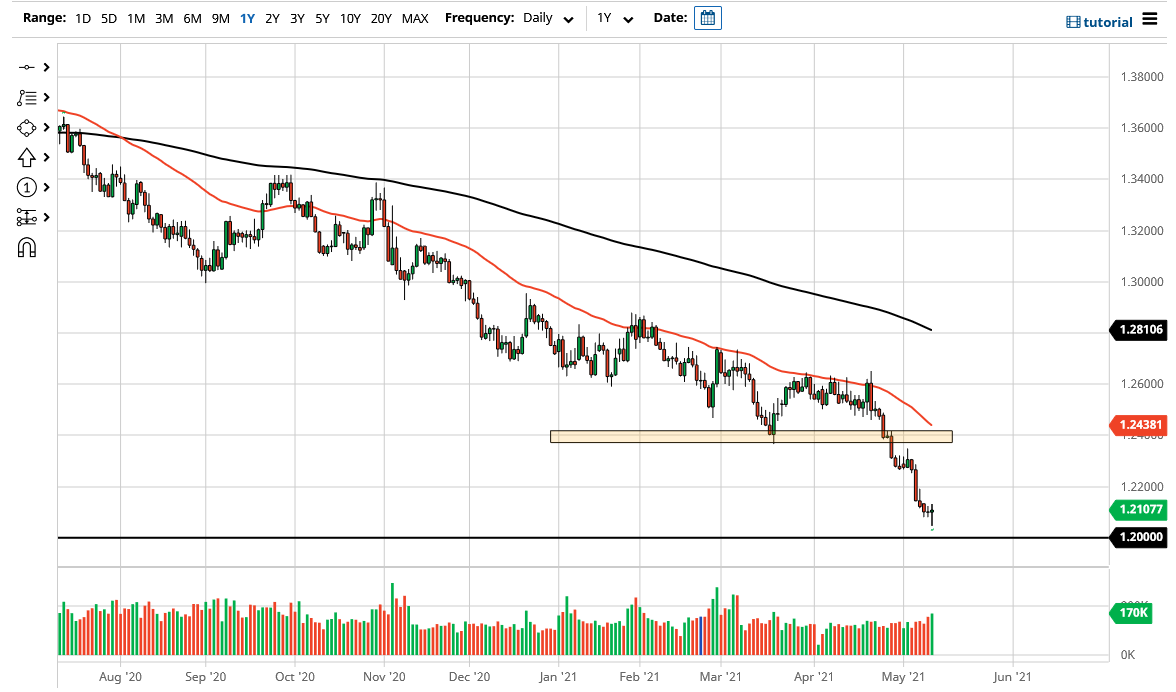The US dollar initially fell against the Canadian dollar during the trading session again on Wednesday, but as we approach the 1.20 handle, it is obvious that we are starting to run into a bit of support. The market is likely to continue to see a lot of volatility in this area, as the 1.20 handle is a large, round, psychologically significant figure. Furthermore, we have formed a bit of a hammer, so this does suggest that we could see a little bit of a bounce, but that bounce more than likely will only be sold into.
To the upside, I believe that the 1.24 handle is going to be massive resistance, but the 1.23 level is also an area that could cause a bit of trouble. In other words, I think it is only a matter of time before we get the daily candlestick that we can start shorting. With that in mind, I am looking for signs of exhaustion to take advantage of, but we have most certainly gotten a bit oversold at this point. The 50-day EMA sits just above the 1.24 level as well, so that adds even more credence to the resistance at this point.
On the other hand, if we were to break down below the 1.20 handle on a daily close, that would be catastrophic for the dollar, as it would most certainly implode and go much lower. As a general rule, when you break down below the bottom of the hammer at a major figure like this, that typically brings in even much more negativity, so that could accelerate the move to the downside. I currently do not see this as being likely, but would have to take that trade if it shows up.
As far as buying is concerned, I have no interest in doing so, at least not until we break well above the 50-day EMA on a daily close, perhaps even the 1.26 handle. In other words, it is not very likely that I will be doing so, but it would be interesting to see if it happens. I think it would take some type of major shock to the system to make that happen. Yes, inflation was a bit higher than anticipated during the trading session, but longer term, that is only transitory, and the Bank of Canada continues to taper bond purchases.

